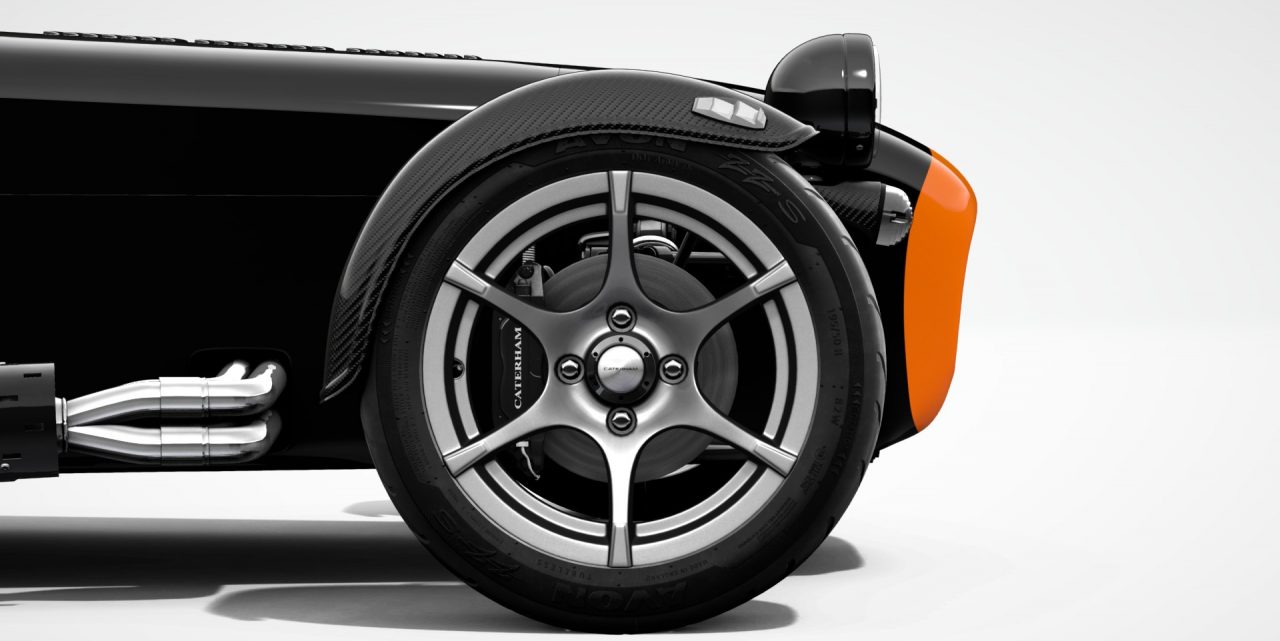
Fitting the carbon interior panels was an extra job I could have avoided if I had specified them at the outset. By the time I decided I wanted to go down this route it was too late to amend the order but Caterham were happy to supply a set as aftersales parts.
Removing the original aluminium panels was covered in an earlier post and the time had come to fit the nice new carbon ones. I had obtained black aluminium rivets for the sides and black stainless ones for the floor seam (this is a structural consideration and Caterham use heavy duty bright stainless rivets in this area).
I was also going to fit the interior knee panels and fuse box cover at this stage. Caterham use self tapping screws for the knee panels as the panels have to be removed in order to access the windcreen stanchion bolts (e.g. to fit an aeroscreen or replace a windscreen). I hate self-tappers and prefer to use machine screws which require drilling and tapping but are easier to install and remove.
The rear panel went in first using a fair amount of RTV sealant between the panel and the chassis members. I dry-fit the panels a couple of times before applying the sealant to work out how to manouvre the panel in place. The tabs on the main tunnel had to be folded flat against the tunnel wall in order to provide enough clearance.
I also made sure I sealed the corners of the lowered floor panels. Although the silicone made the process somewhat messy the panel went in without any real trouble and all the rivet holes lined up. This was where the air rivet gun came into its own – much less effort and greatly reduced chance of slipping and marring the surface.
The side panels went in without any trouble, in fact it was much easier installing the new panels than it was pulling the old ones out. Again the air rivet gun was invaluable, particularly with the stainless rivets which require about 3 times the effort to install compared to the alumnium ones.
I drilled and tapped the holes along the upper edge of the side panels where the knee panels go. The holes in the panels lined up perfectly so the drill was just to clean out the hole and it was an easy job with a 4mm hand tap the prepare for the machine screws.
The final interior panels to fit are the ‘keystone’ panels that cover the bow tubes. I had to mark and drill the holes in the back panel but everything went well. At the time of installation I was waiting for the carbon fibre bow tube protectors so I left this area un riveted but the rear panel and interior footwell panels were securely riveted in place.
UPDATE: The bow tube protectors arrived from Classic Carbon and finish this area off nicely which is vulnerable to scratches and chipping from the harnesses as you get in and out.
Knee Panels and Fuse Box Cover: The knee panels can be quite a problem to fit as it is very difficult to get the holes to line up. The bottom edge of the knee panel is slotted in between the chassis and the interior panel. It then has to be pulled toward the dashboard so that the edge fits above the rolled bottom edge of the dash. Lining the holes up is very difficult and other builders have just drilled new holes into the knee panels. I found a tip from Chris Collins very helpful here. Simply using a piece of masking tape on the knee panel and marking the position of the holes makes lining everything up a lot easier as the fore/aft alignment is taken care of. Once I’d got one screw loosely in place though the others went in quite easily.
The fuse box like the knee panels requires a bit of preparation involving gluing more rubber edge trim along the non-radiused edges. The fuse box cover also houses the 12V socket outlet (useful as a charger port) and is fixed in place with 3M ‘Dual lock’ tape (a stronger version of ‘velcro’).
The final job in this area was to fit the rubber floor mats. These are handed and require press-stud bases to be riveted to the floor and the press-stud fasteners to be riveted to the mats themselves – all fairly straightforward.















